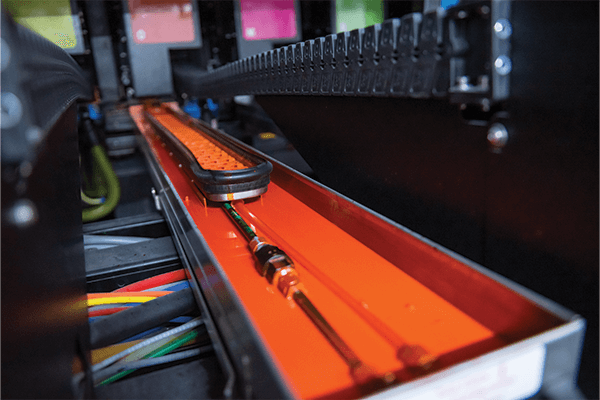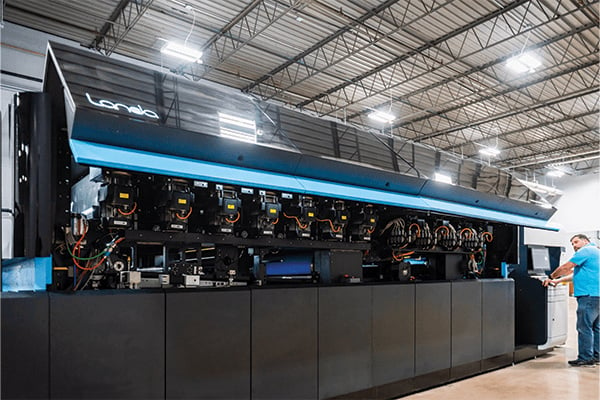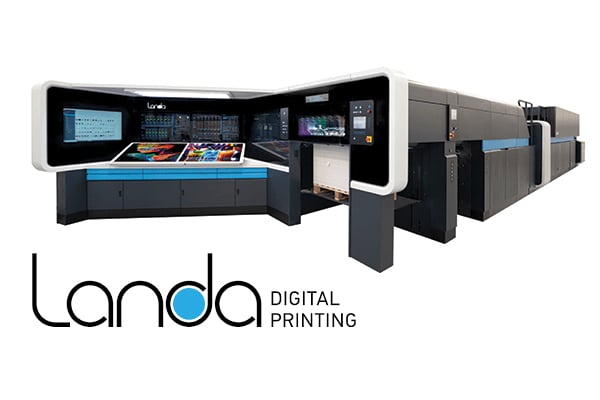 A recent look at the current state of the insurance industry found that more insurers are rapidly embracing smart digital technology platforms like AI-enabled chatbots to provide more personalized customer experiences on their websites. Today’s consumer expects custom, highly-targeted messaging that speaks to their individual wants and needs, and this is especially true when it comes to matters of insurance.
A recent look at the current state of the insurance industry found that more insurers are rapidly embracing smart digital technology platforms like AI-enabled chatbots to provide more personalized customer experiences on their websites. Today’s consumer expects custom, highly-targeted messaging that speaks to their individual wants and needs, and this is especially true when it comes to matters of insurance.
This same personal touch also applies to how insurers should leverage their print communications, in part because the tactile nature of print has been shown to promote better information and recall, but also because more than half of consumers find print communications like invoices and bills preferable to digital counterparts.
Print automation provides some interesting opportunities for insurers to adopt a more strategic approach to their print communications in ways that can help acquire new customers, better retain current customers, and unlock more efficient workflows. Here, we’ll look at why insurers should be thinking about print automation now to help create more strategic communications in 2024 and beyond.
Print automation makes it easier to get critical communications in the hands of customers faster
Critical communications — materials like account summaries, invoices, and explanations of benefits (EOBs), to name a few — represent a large percentage of the total print pieces insurance companies create each year. Aside from the sheer number of pages associated with this type of print, many of these documents are time-sensitive and need to be printed and mailed quickly to satisfy industry regulations and gain the trust of customers.
A print automation solution can integrate with your customer relationship management system (CRM) for a data-driven approach to create personalized, highly targeted print communications quickly. What’s more, partnering with a strategic print partner that utilizes on-demand print technology makes it possible to create critical communication documents in real time based on a variety of triggers, including customer actions or milestones.
For example, print automation can help life insurance providers create a custom, personalized welcome packet for customers who purchase a new life insurance policy online. Or, in the instance of automotive insurance providers, print automation makes it possible to print required claim documentation the moment an accident claim is filed and reviewed. And health insurance providers can benefit from print automation when open enrollment season rolls around.
In each of these real-world scenarios, a print automation solution helps insurers take a more strategic approach to their print communications with an emphasis on speed and relevant, targeted messaging.
Print automation makes it easier to create multichannel marketing campaigns
Successful brands engage their customers via the mediums their ideal customers use most frequently. While print is an extremely effective marketing channel, digital communication methods like email marketing and paid social media campaigns reach your target audience in mediums consumers use every day. Bridging the gap between the print and digital worlds for a more multichannel marketing approach can be the ticket to unlock more effective, immersive messaging.
Print automation makes it easier to create print materials like direct mail postcards using variable data and images based in part on how your audience engages with digital messaging. This helps create a multichannel approach with an additional touchpoint that leverages the power of print to help consumers better retain and recall information about products and services — and hopefully help increase your conversion rates.
For example, print automation makes it possible to print personalized, highly targeted direct mail pieces with a unique or special offer based on whether contacts engage with an email marketing campaign. Plus, with an automated print solution, insurers can execute several different print jobs on a 24/7 basis using different streams of data. This simplifies the process of facilitating multiple campaigns at any given time.
Print automation helps you optimize your use of resources
Insurers often need to print documents in large quantities in order to meet demand — these projects can range from account summaries and invoices to postcards that position special, limited-time opportunities. Printing these types of documents on a more traditional offset press requires large runs to achieve economies of scale and a return on investment. This often results in large numbers of excess copies that you have to store, some of which may not be used.
A print automation infrastructure that leverages on-demand print technology can accelerate the process of printing the exact number of copies needed precisely when you need them. This virtually eliminates the chance of printing excess, unused copies. Plus, the ability to edit design files in real time makes it possible to update campaign components like messaging, promotions, and product information to avoid printing inaccurate pieces that you can’t use.
Additionally, printing the precise number of copies you need right when you need them helps better conserve resources like ink and paper. Not only does this help increase the ROI of your print materials, but significantly reducing the potential for waste helps to support your sustainability efforts.
The digital press technology that fuels a print automation solution can also offer the ability to print on a wider variety of substrates to increase the flexibility of your print communications. For example, Nanographic Printing gives you the ability to print on any off-the-shelf recycled substrate, regardless of the amount of post-consumer fibers or whether the sheet is coated, uncoated, treated, or untreated. The capability to print on any off-the-shelf recycled substrate not only makes your print more sustainable, but it also helps you avoid product availability issues or breakdowns in the paper supply chain.
With a long history as a strategic print partner, Quantum can help you harness the power and flexibility of print automation to create more targeted, personalized print materials. Learn more about our print automation solutions.




